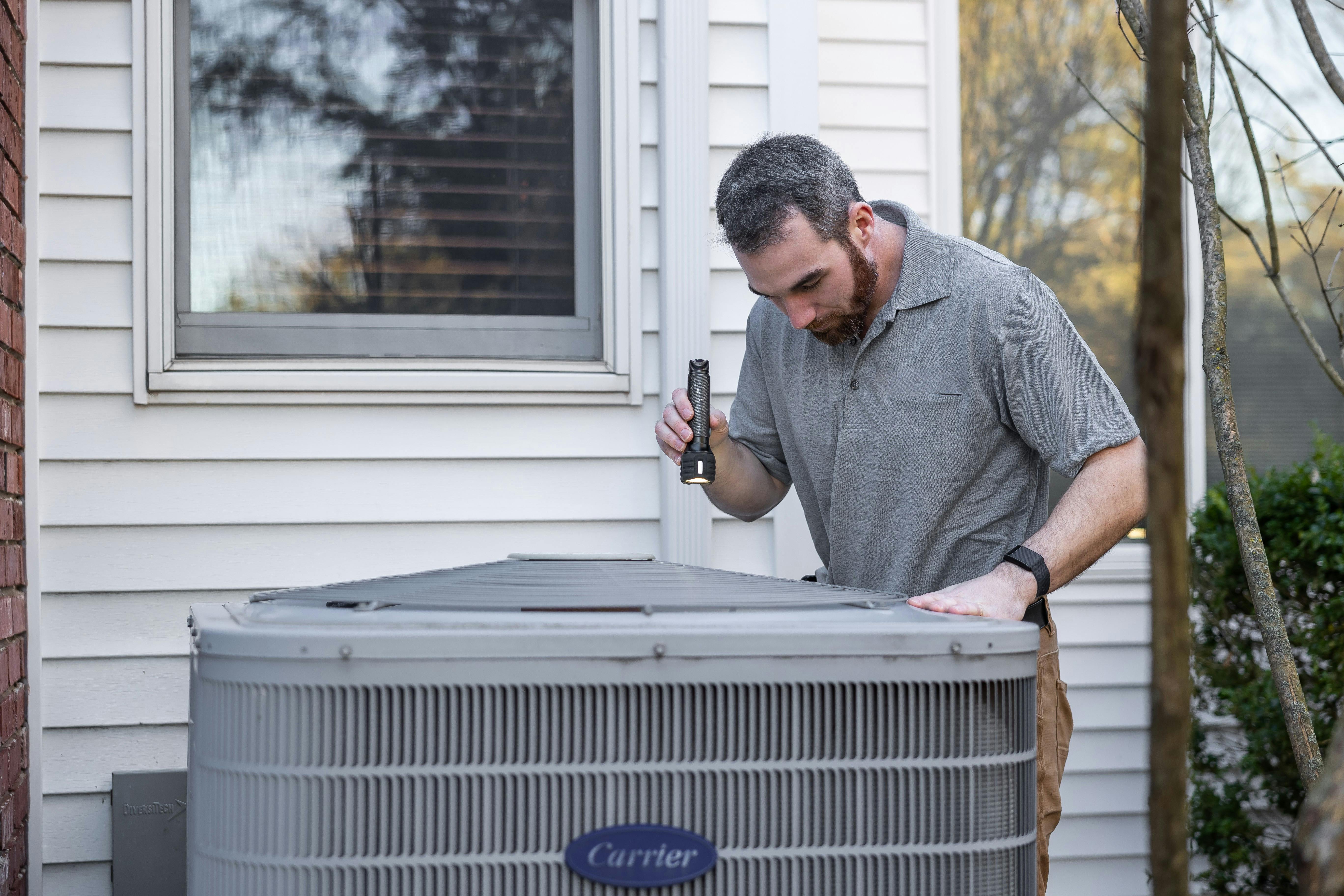Home Envelope Optimization for Reduced HVAC Load
.webp)

Is Your Home Wasting Your Money? A Phoenix Homeowner's Guide to a More Efficient Home
You’ve serviced your air conditioner. You’ve bumped the thermostat up a few degrees. Yet, every summer, your cooling bills in Phoenix feel astronomical.
If your HVAC system is working properly but costs remain high, the real issue may not be your AC—it’s likely your home’s envelope.
Think of your home as a bucket you’re trying to keep full of cool air. The AC is the faucet, but if the bucket has holes, you’ll be running it constantly just to keep up. That’s exactly what happens when your walls, windows, roof, and foundation aren’t properly sealed and insulated. You’re essentially paying to cool the Arizona outdoors.
At Authorized Air Cooling & Heating, we’ve spent over 35 years helping Phoenix residents optimize their homes. A high-efficiency AC is only half the battle—true energy savings come from looking at the whole picture.
This guide walks you through optimizing your home’s envelope, turning that leaky bucket into a fortress against desert heat.
Your First Step: A No-Nonsense Home Energy Audit
Before spending a dollar on upgrades, you need a diagnosis: where is your home losing energy?
DIY Walkthrough
Start with a simple checklist to spot obvious culprits:
- Drafts around windows and doors
- Gaps around pipes and wiring
- Inconsistent attic insulation
Professional Assessment
To uncover hidden leaks, hire a professional. Tools like thermal imaging cameras reveal where conditioned air escapes—something you can’t see with the naked eye.
This data-driven approach ensures every investment is targeted, efficient, and predictable.
Prioritizing Upgrades for Maximum ROI in the Arizona Climate
Not all upgrades are equal. Based on decades of experience, here’s the most effective order for Phoenix homeowners:
1. Air Sealing: High Impact, Low Cost
Air sealing is the most cost-effective first step. According to ENERGY STAR, sealing gaps and cracks can save up to 15% on heating and cooling costs.
Common leakage spots:
- Recessed lighting fixtures and attic hatches
- Plumbing and electrical penetrations
- Gaps around window and door frames
Air sealing ensures existing insulation works properly and amplifies the effect of all future improvements.
2. Insulation: Your Best Defense Against the Desert Sun
The Phoenix sun can heat attics to 150°F or more, radiating down and forcing your AC to work overtime.
- Choose insulation with a high R-value that withstands extreme heat
- A combination of air sealing + blown-in insulation is often most effective for local homes
[Read our complete guide to choosing the best attic insulation for Phoenix homes.]
3. Windows & Doors: Controlling Heat Gain
Windows are major sources of heat. Old single-pane windows can undo all your AC efforts.
Framework for deciding:
- Repair: Re-caulk and add weatherstripping if frames are in good shape
- Replace: Single-pane, warped frames, or moisture between panes → install dual-pane, low-E windows for immediate energy savings
4. Radiant Barriers: Reflecting Arizona Heat
A radiant barrier in the attic reduces heat transfer from the roof, lowering attic temperatures and the cooling load on your AC system.
The Authorized Air Difference: When to Call Professionals
Some tasks, like basic weatherstripping, are great DIY projects. But comprehensive home envelope optimization requires expertise. Improper insulation or sealing can trap moisture, creating bigger problems down the road.
Our whole-home approach ensures your HVAC system and envelope work as an integrated system. Professional energy assessments provide:
- Clear, prioritized improvement plans
- Data-backed recommendations
- Confidence that every upgrade maximizes ROI
[Learn more about our comprehensive home energy assessments.]
Frequently Asked Questions
Q1: How much can I save by improving my home's envelope?
- Savings range from 5% to 30% of annual energy bills.
- For a typical Phoenix home, that’s hundreds of dollars per year.
Q2: Is it worth investing in an older home?
- Absolutely. Older homes often have the most to gain, sometimes surpassing newer constructions in comfort after upgrades.
Q3: Will sealing my home too tightly cause air quality issues?
- A professional approach ensures adequate ventilation while maintaining high energy efficiency.
Q4: How is a home energy audit different from an HVAC inspection?
- HVAC inspection = mechanical equipment only
- Home energy audit = evaluates the entire system (insulation, air leakage, windows, HVAC)
Your Path to a Smarter, More Comfortable Home
A high-efficiency AC is powerful—but it can’t overcome a leaky, poorly insulated home.
By focusing on the home envelope first:
- Reduce overall cooling load
- Lower energy bills
- Increase HVAC lifespan
- Improve comfort and air quality
Stop paying to cool the neighborhood—invest in your home and comfort.


